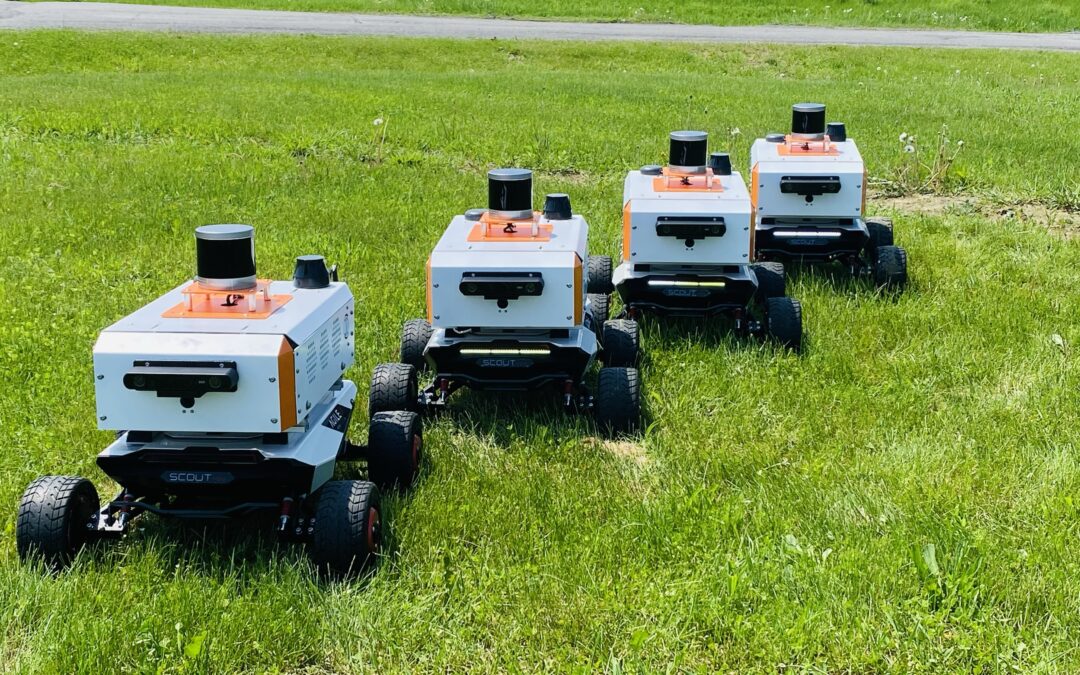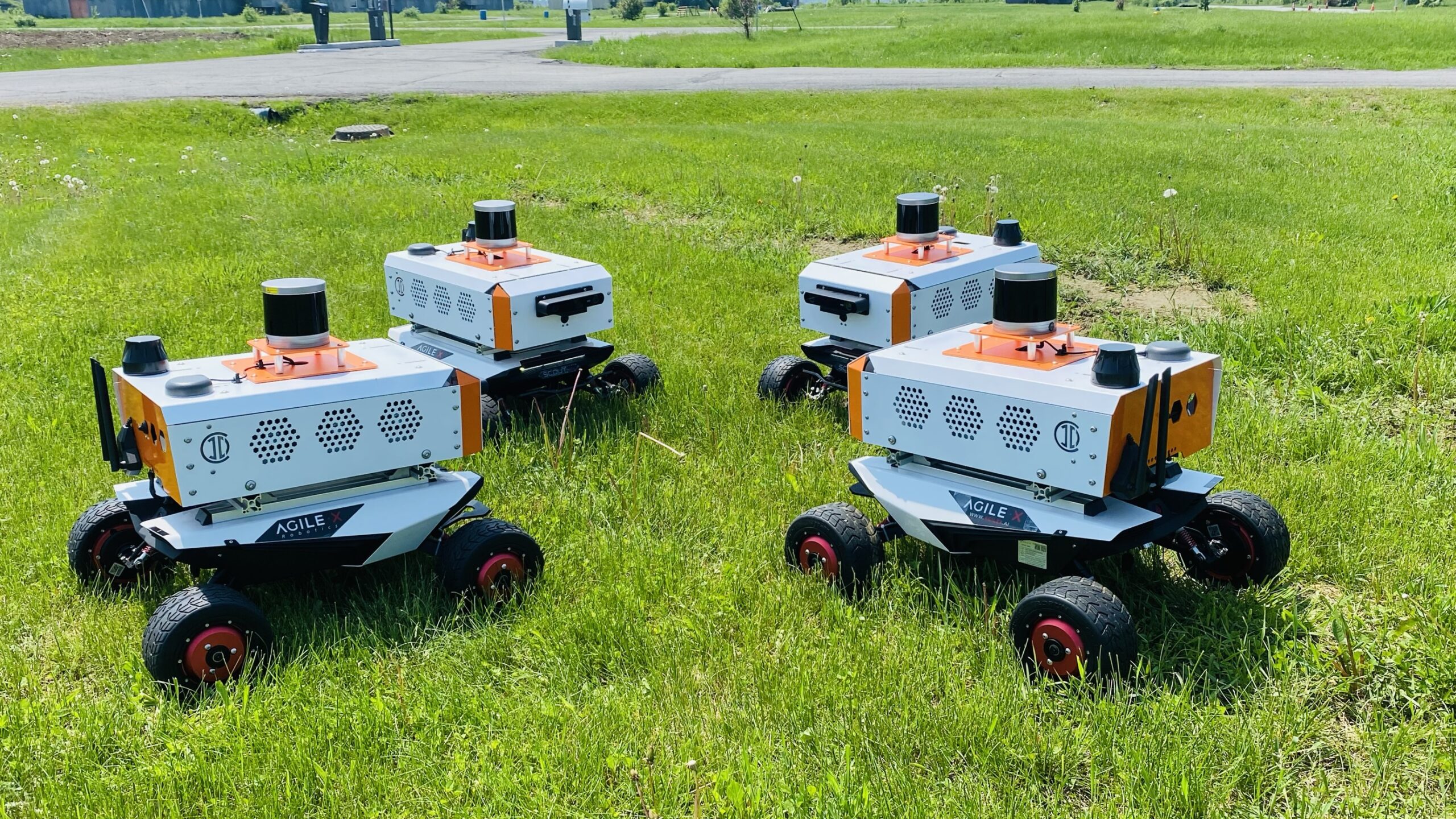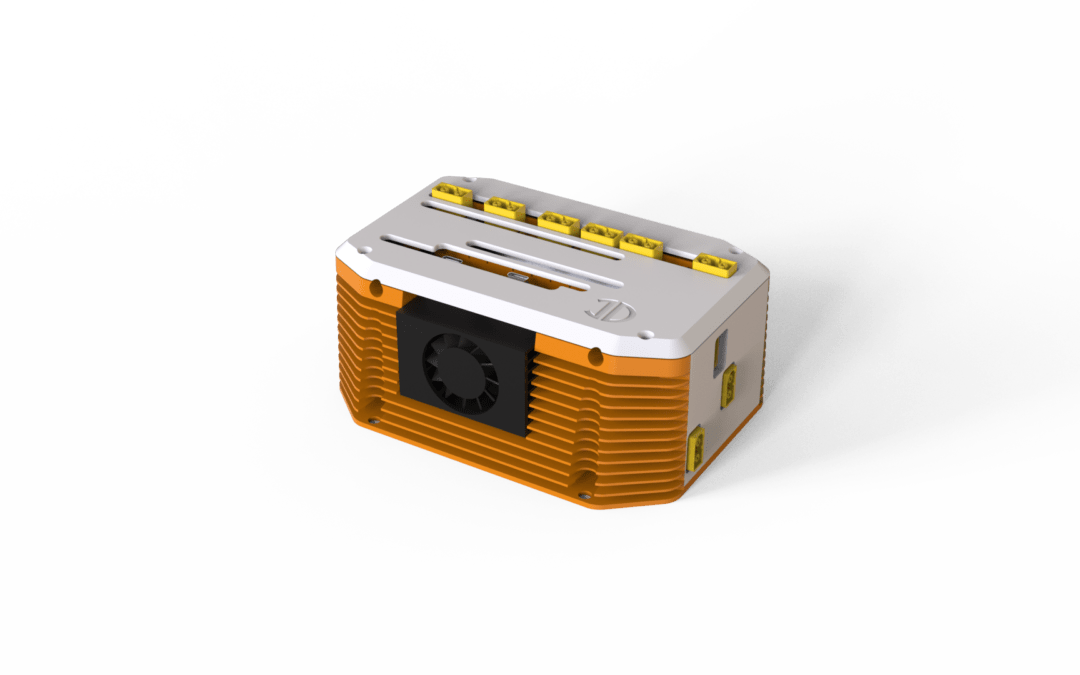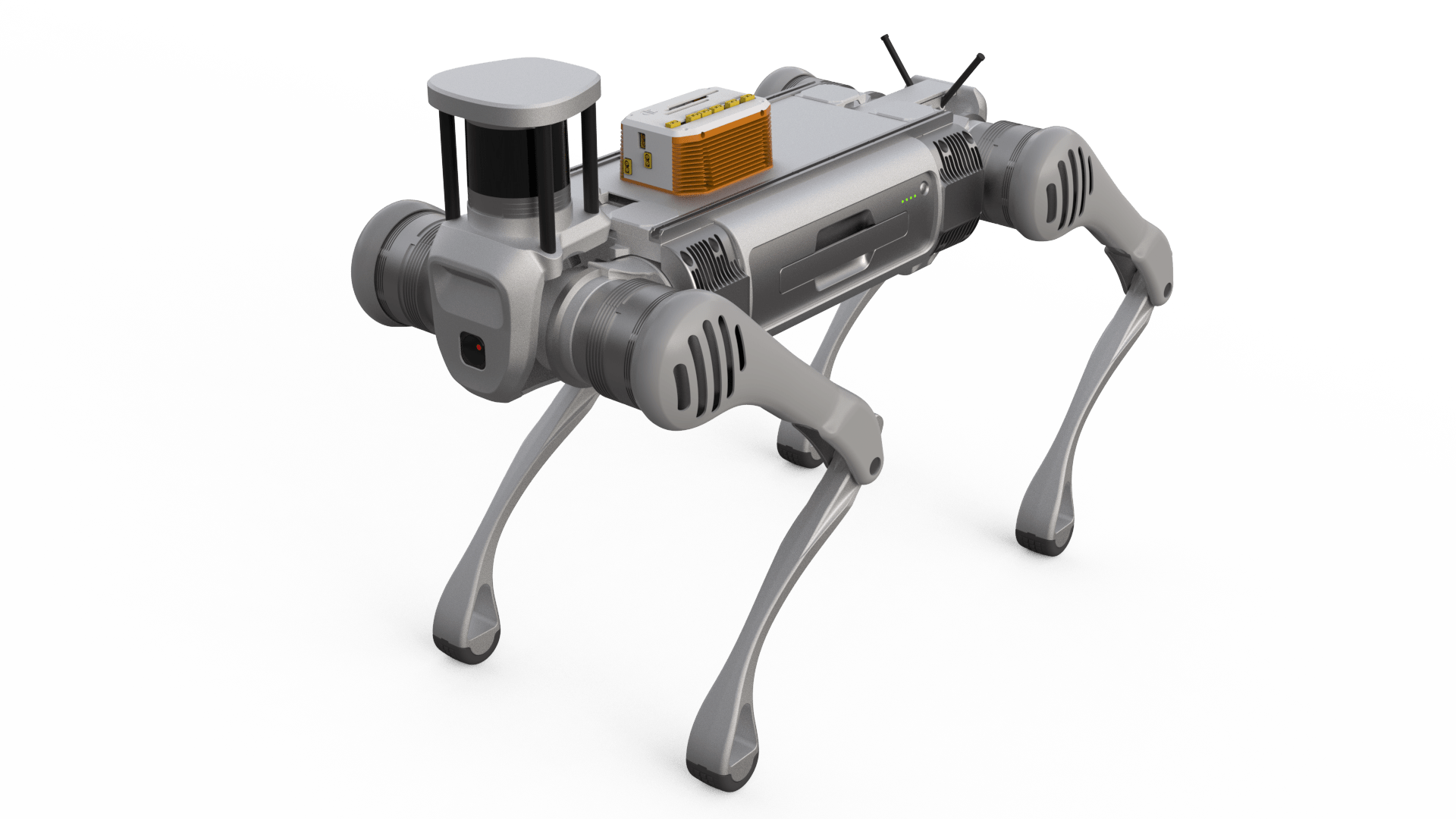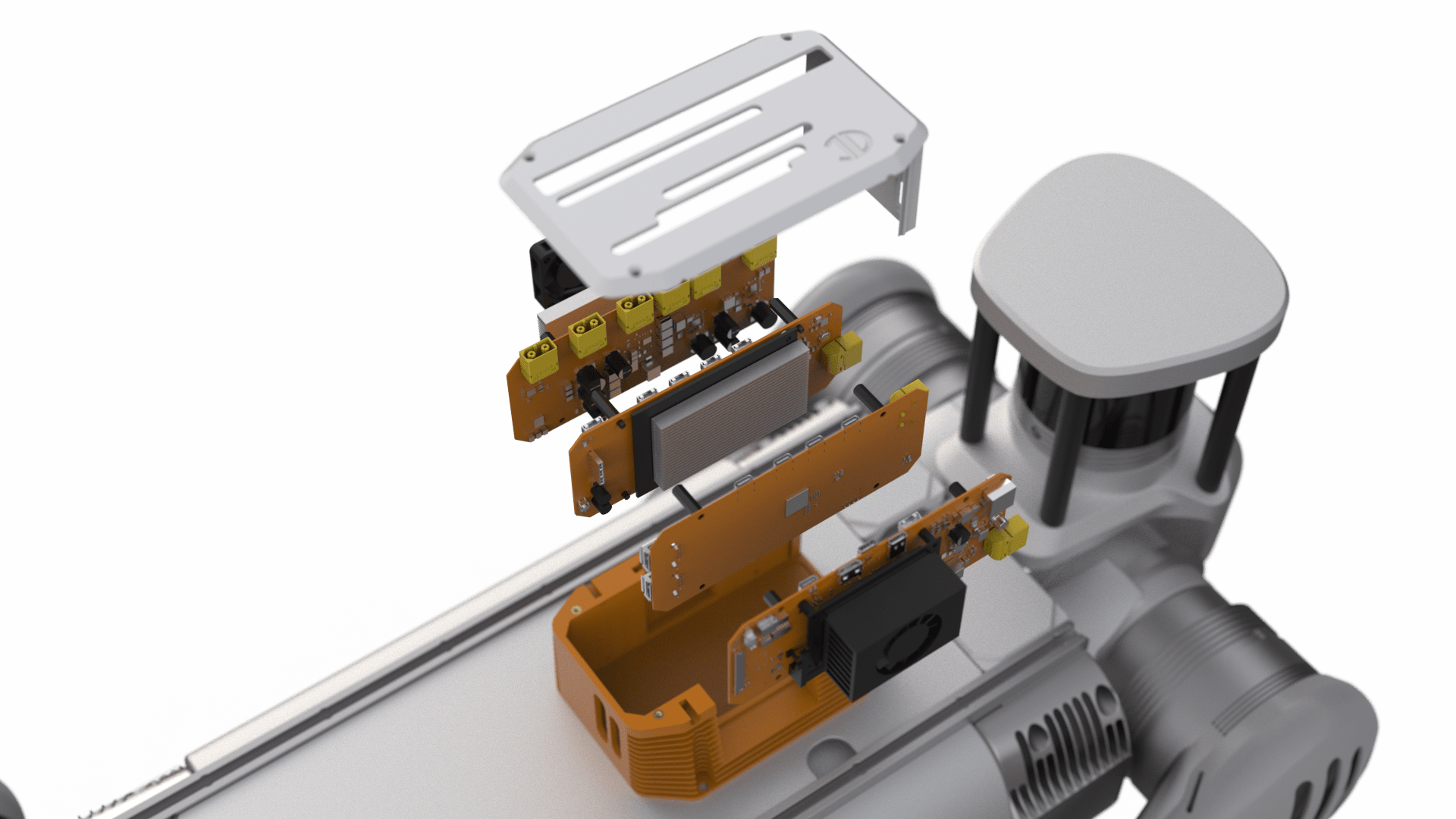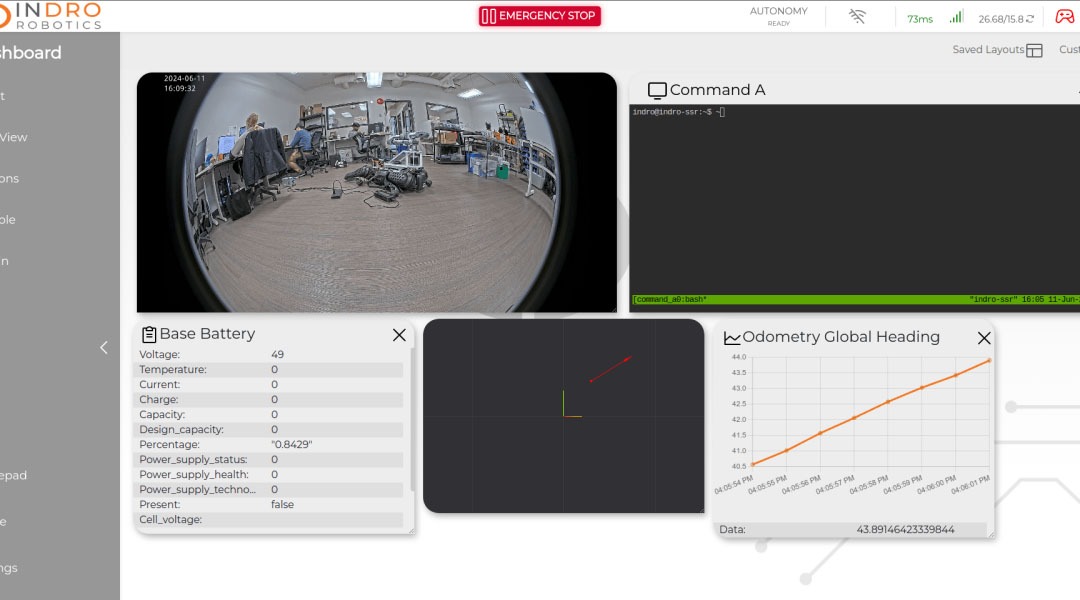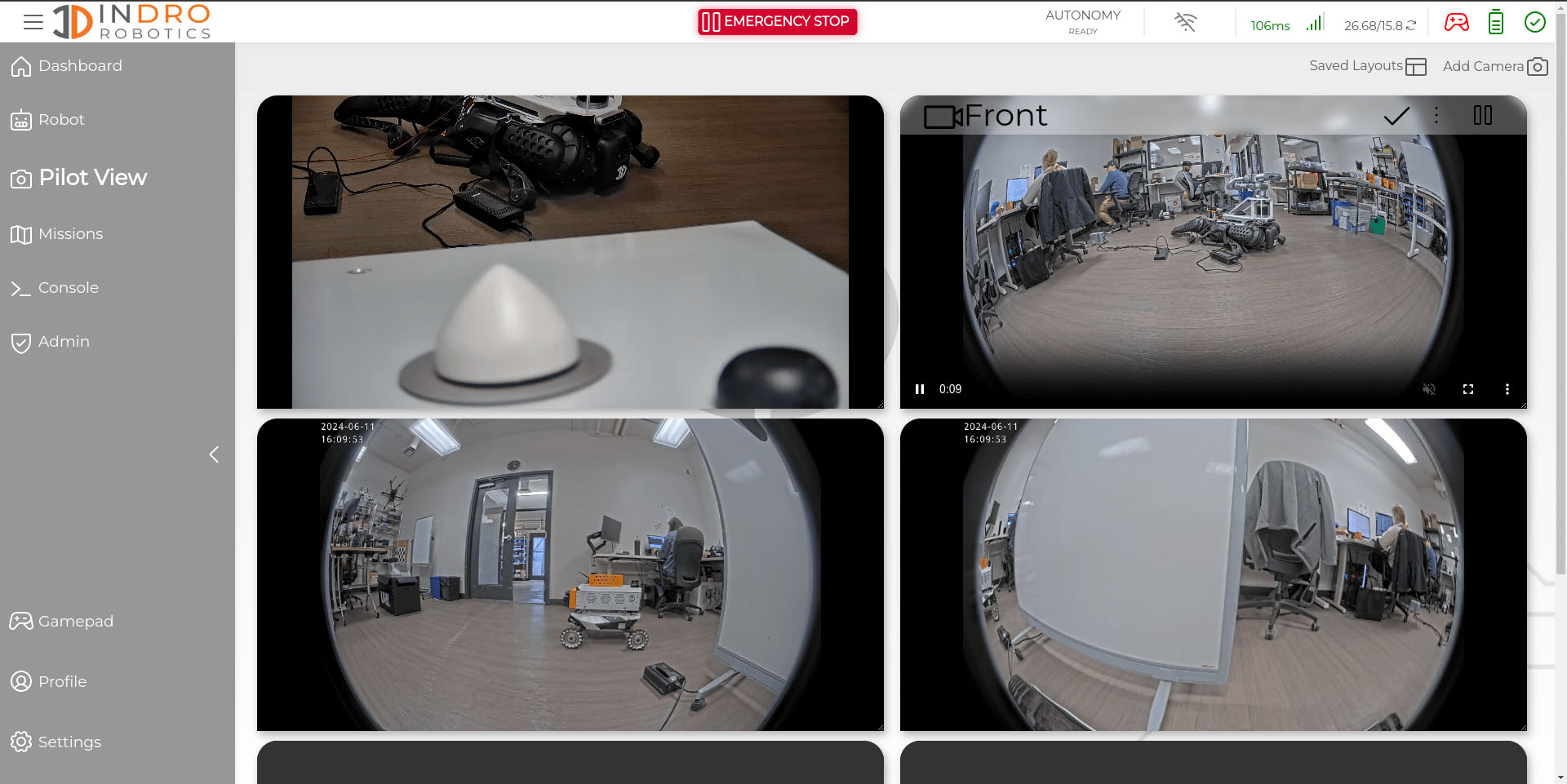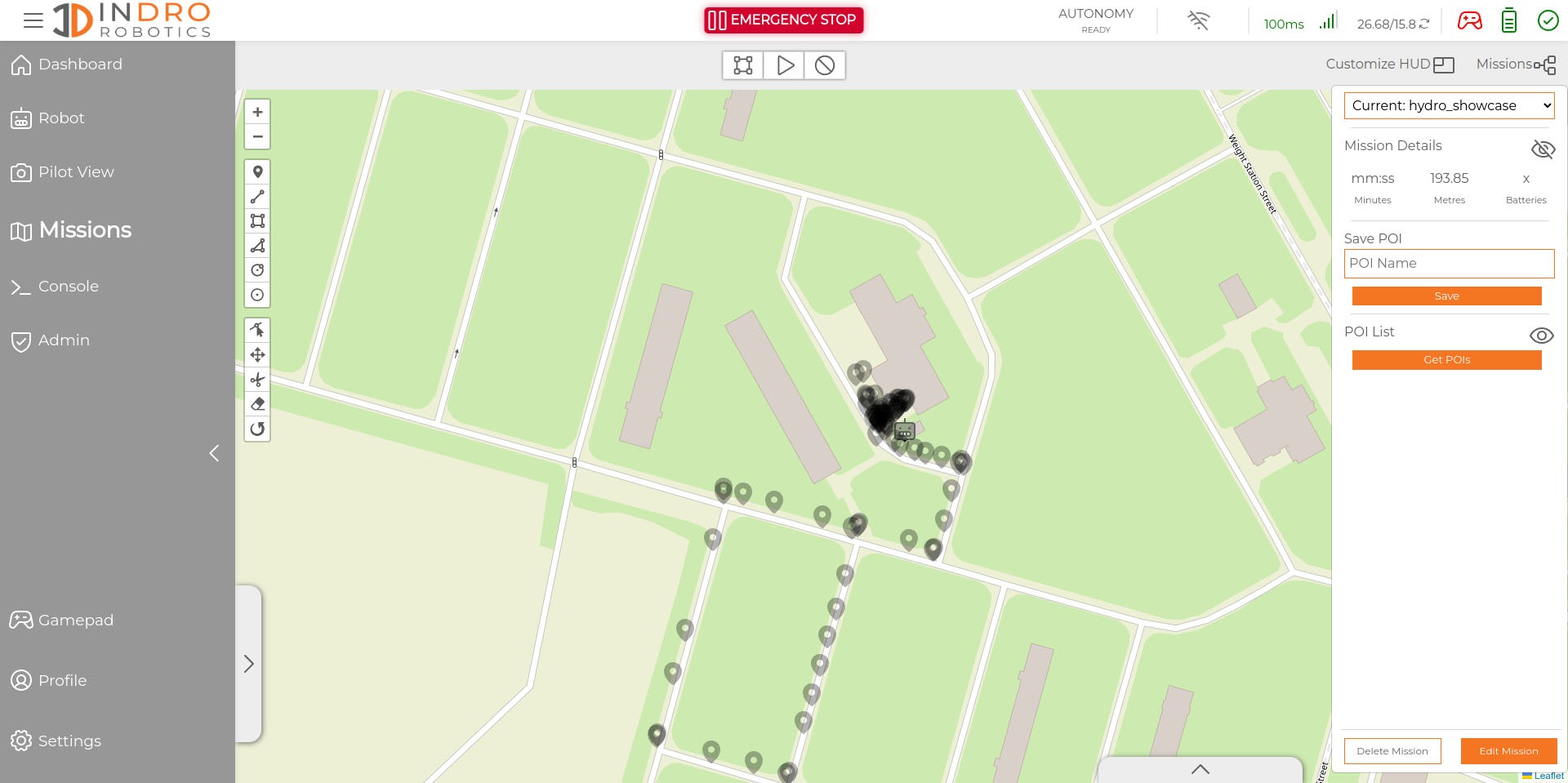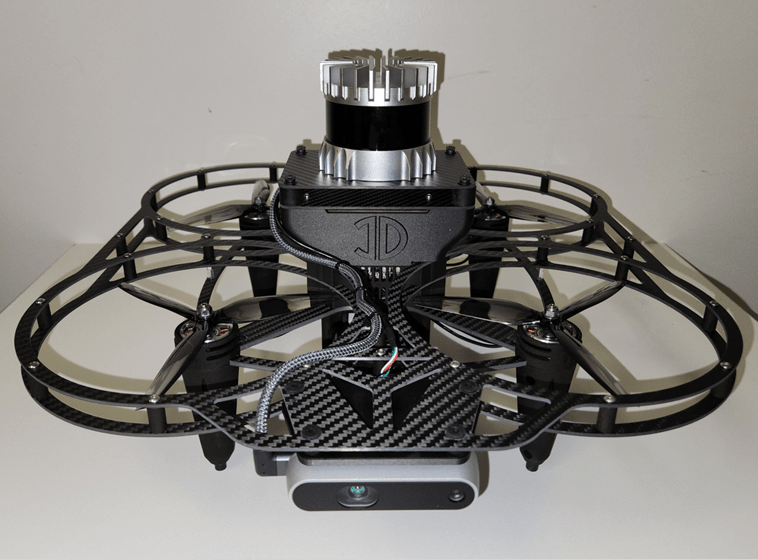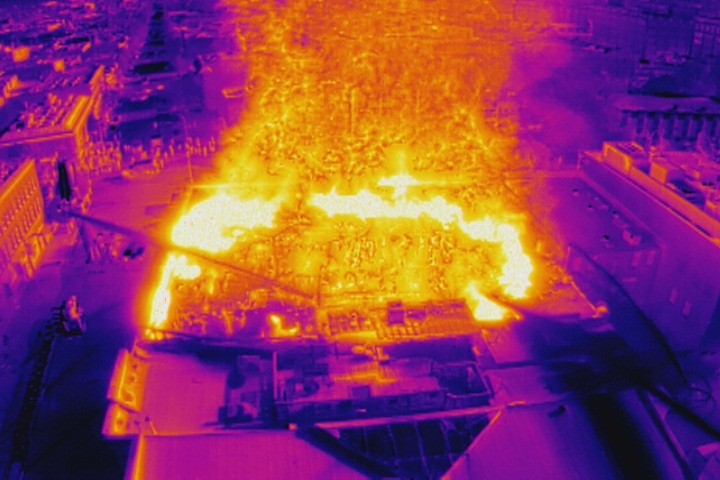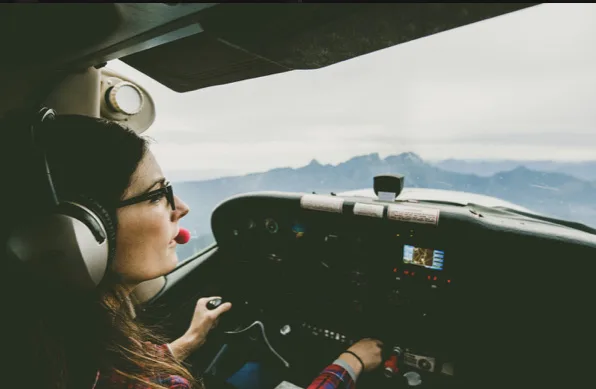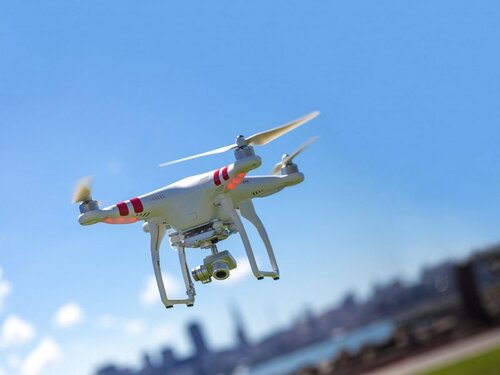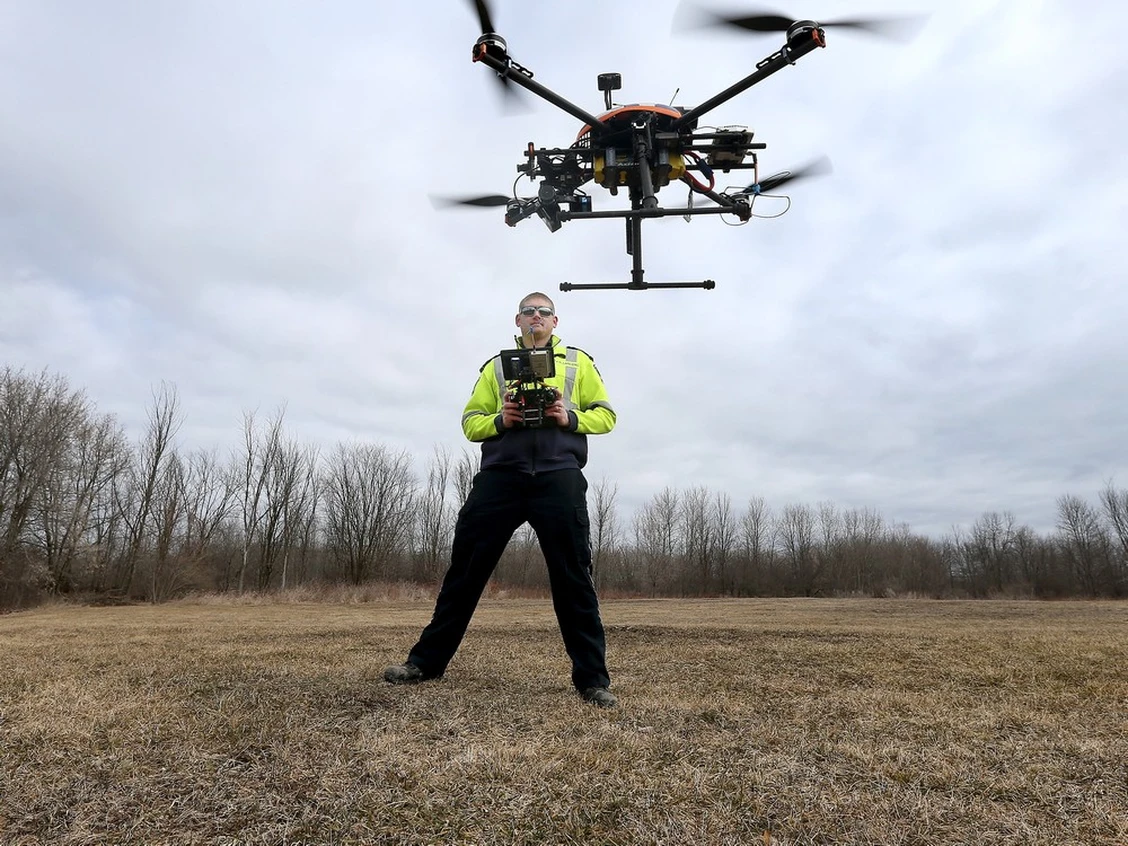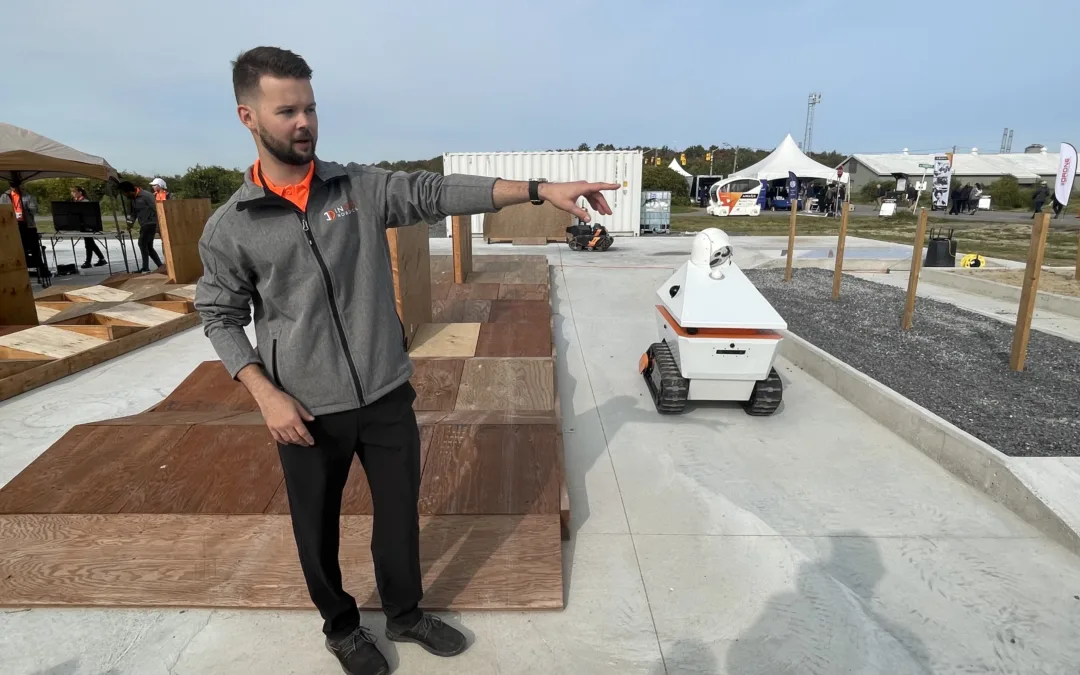
Sales and support: The InDro Experience
By Scott Simmie
We’ve all had them. Some unfamiliar number shows up on your phone, and the next thing you know someone is trying to pitch duct cleaning, a new cellular plan, or something else you likely don’t want or need.
You’ll never receive a call like that from us. For one thing, we don’t do duct cleaning (though we could probably build a robot capable of that). But there’s a bigger, more important reason. We cater – above all – to building a relationship with and satisfying the needs of the client. That’s both before we agree on a sale, and for long after the product is delivered.
While InDro is known for such ground-breaking stand-alone products as InDro Commander, the new InDro Cortex and InDro Controller, along with other platforms that enable researchers and R&D companies to build their own robots and drones with greater efficiency and simplicity, the bulk of our sales are custom products.
That means designing and building a robot or other device based on the specific needs and use-cases of the customer. Sometimes it’s a single, one-off design. But it could also be, as we recently reported, an entire fleet of custom robots for swarm research.
Regardless of the product or platform, the process nearly always begins with the first of many conversations with Luke Corbeth, our Head of R&D sales.
Below: Luke at a recent conference
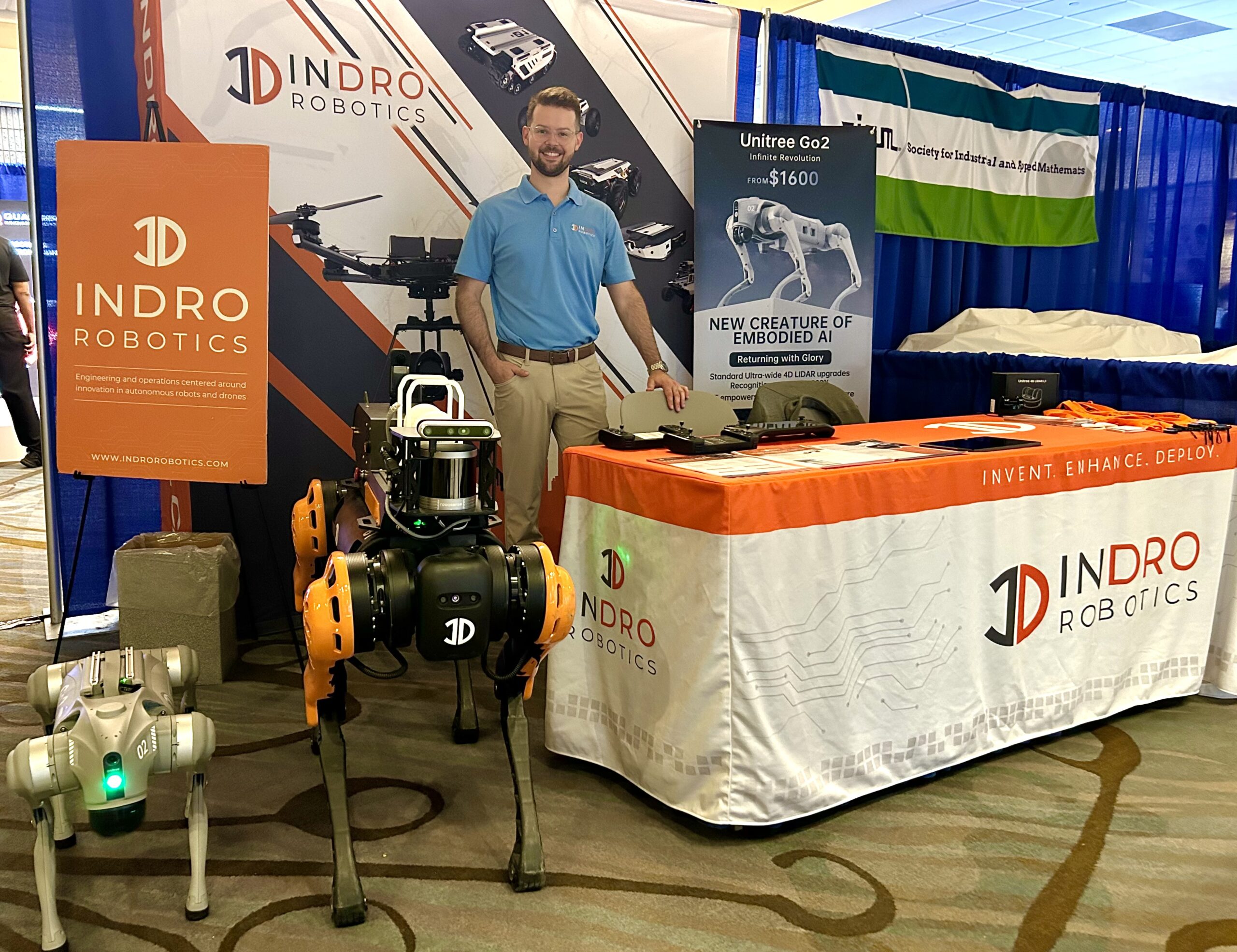
CORBY CAR CLEANERS
The story, or part of it, begins with a company called Corby Car Cleaners. “Corby” was Luke’s nickname in high school. An entrepreneur at heart, the prospect of working a traditional job didn’t appeal much. Corbeth wanted to learn about running his own business and was looking for the satisfaction that comes with building something from scratch. So he opened an on-demand car detailing business, where he’d show up at the client’s home and perform the service. How many people do you know that had the drive to start their own company in high school? (I can think of only one other; a friend who installed car stereos. I ran into him, decades later, at a CES show. His company was by then installing high-end systems – $100k+ – into cars owned by pro athletes, actors etc.)
“That was my way of building a basic business – doing sales and then actually executing the business,” he recalls.
With that – and high school – under his belt, Corbeth went to McGill University. Specifically, the prestigious Desautels Faculty of Management for a degree in Management. Corbeth had already shown a real knack for finance, which was part of the course. But he had the option of choosing specialisations. He was tremendously interested in technology – learning about AI, startups, the growing impact of other forms of tech – so he selected Digital Innovation as one of his tracks. But there was still another specialty he could select.
“I had something I was interested in (Digital Innovation), something I was good at (Finance) and something I felt I was missing,” he says. And that third piece of the puzzle?
“I didn’t understand the way operations are conducted. So I felt Operations Management was the missing piece; data science and understanding the optimal way to carry out operations. So that became the third piece of my arsenal.”
FROM CAR CLEANING TO WALL STREET
With his degree fresh in hand in 2019, Corbeth quickly landed two impressive jobs straight out of the gate. He did equity research at a hedge fund in New York, working to identify investment opportunities that the company referred to as having “material dislocation from fair value.” In other words, assets and stock that were undervalued. He also worked at a private real estate investment firm – which only had a single product to sell. He didn’t like that one much.
“When you have only one offering as a sales professional, it occasionally it feels like you’re trying to put a triangle into a circular hole – like you’re trying to force something upon someone.”
That wasn’t a fit for Corbeth. He was still drawn to technology; felt that was the future. Plus, something A McGill professor once said still resonated with him. It was along the lines of: ‘All the best investments in life, you need to be contrarian and right.’
“I was like, ‘Wow, that’s a very profound thought.’ Another way to think of that is: ‘You have to believe in a future that people don’t yet believe in, but will one day also believe in.’ And that’s what really attracted me to robotics,” he says.
“Sci-fi would suggest that it’s the future, but not everyone sees a future where robots are assistants to humans – carrying out useful and valuable tasks and doing the jobs we don’t want our kids to do. But I believe in that future, and I think people are going to want that future. And you know what? It’s becoming increasingly true.”
And then came the perfect fit: An opening for a sales professional at InDro Robotics in 2021.
“I was very excited at the prospect of joining the very field I was most interested in,” he says.
Below: Head of R&D Sales Luke Corbeth doing a public demo at the opening of Area X.O’s DARTT – the Drone and Advanced Robot Training and Testing facility
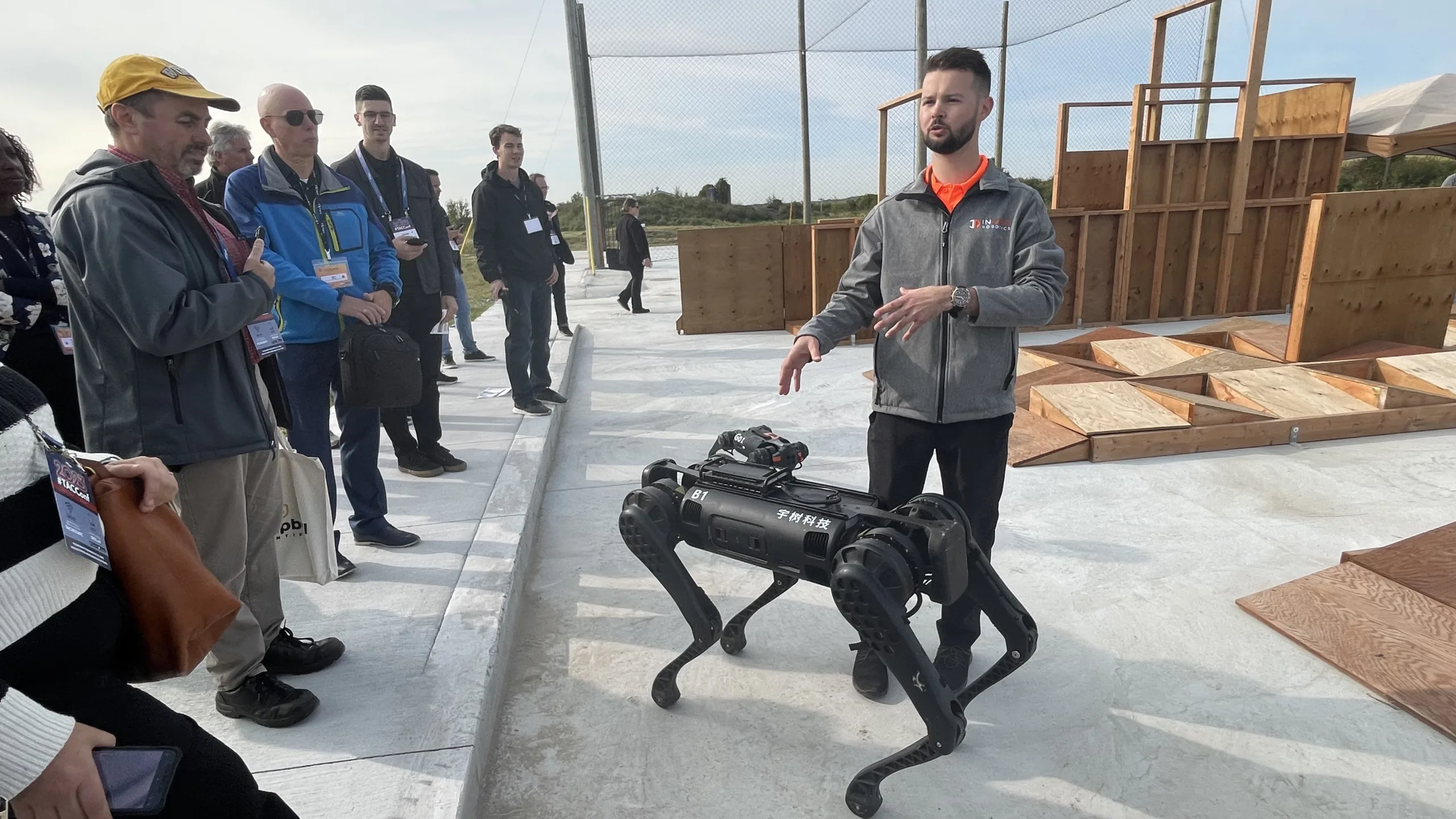
THE INDRO EXPERIENCE
With this background, Corbeth had the perfect skill set – and passion – to take on sales with InDro Robotics. His keen interest in technology led him to quickly absorb everything possible when it came to sensors, compute capabilities, autonomy and more. But it was the chance to tailor something very specifically suited to the needs of a customer that truly appealed. He would never again be in a position of trying to put a triangle into a circular hole.
“What’s very unique about InDro Robotics is that because we take such a modular approach and we have so many partners and ways to bring solutions together, It feels like I always have the right shape to put in each hole – regardless of what shape it is.”
As mentioned, InDro most often builds completely custom robots for its clients. Corbeth is truly passionate about working with clients to fully understand their needs before even beginning to explore what options might be developed for them.
“The way I think about my job is this: People present a problem that they envision a solution for that requires uncrewed systems of some kind, whether that’s robots or drones. And I take it upon myself to thoroughly understand that problem and recommend all of the best available hardware and software at our disposal to solve that problem,” he says.
With rare exceptions, this isn’t just a simple phone call. Nor is it a process of simply ticking boxes for sensors, compute, platform etc. For Corbeth (and InDro), it’s the beginning of a relationship where together we explore every conceivable option to ensure that the client’s needs are met and their problem is solved. It generally starts with Corbeth sending a resource package to potential clients prior to any deeper conversation, so that they can fully understand InDro’s offerings, expertise, platforms, etc.
“The whole idea there is: Let’s identify the problem – and let’s identify the desired future. And since they’ve done their homework, ideally with the resources I’ve sent, then we can really dive into exactly what InDro Robotics can do specifically to get them there.”
This is a key part of the process.
“So the initial part of the conversation is always trying to understand the client’s desired future: What is it they’re actually trying to accomplish? And often times, just by talking it out with the client, I make discoveries about what they’re trying to do. They even make discoveries about what they’re trying to do. That’s always the first part: Thoroughly identifying the problem and what the ideal future should be.”
In some cases, for example, clients have come in looking for a wheeled platform, perhaps because they’ve seen a similar robot with wheels. But after further exploration of the use-case and terrain, they might together discover that a quadruped or tracked platform might be more suitable.
“If a client doesn’t know the existence of something, then it’s impossible for them to know that’s actually what they need,” he explains. “So part of my job is informing them of what is available, what is trending, what has been successful. It’s all about clarifying that problem and that vision for the future – and then seeing if we have something in the arsenal that can help get them there quickly.”
Below: Luke being interviewed at Area X.O’s DARTT
FROM PROBLEM TO SOLUTION
So then what happens?
Well, the second phase is seeing if there’s a fit. Can we provide what the client is seeking? Usually, of course, the answer is yes.
“With all that is available to us, can we offer something that meets their budget, meets their timeline, meets all of the project requirements so that we can help them achieve this future they’re seeking?”
This is something we really want to nail down.
“Sometimes in sales, companies will say: ‘Yes, my solution can solve every problem’ – and that’s not always the case. So if it makes sense to refer them to an adjacent providers outside our immediate circle, I’ll do that. But we’re in a fortunate position where we can solve a lot of problems – so that doesn’t happen very often.”
Once the client’s needs are fully understood, Corbeth works closely with them to drill down to the specifics: What type of LiDAR and other sensors best suit the application? How much compute power is needed? What platform and locomotion is best suited to the use-case? Is an autonomy stack required? The list, of course, goes on. And InDro has multiple options in every category to ensure the end product is the right one.
NEXT STEPS
We live, unfortunately, in a world where there’s a lot of hype – particularly when it comes to technology. There’s no shortage of vapourware, renders for products that don’t yet exist, and other techniques to draw clients into a sales funnel. At InDro, we take great pride in the fact our products are real and do exactly what we state.
“We’ve built custom products for everyone from small colleges and research teams right up to the largest technology companies in the world,” says Corbeth.
It’s one thing to say that; it’s quite another to prove it. And so Corbeth frequently arranges for an in-person or remote demonstration, where clients can control an existing robot or drone and take it for a test drive. They can experience the near-zero latency with remote ops, see the intuitiveness of the control system, and view all sensors, robot health (and much more) through the secure InDro Controller dashboard.
“We get them time on the sticks – ideally in person, but very often over Teams – and let them control a robot on our site. They can see how we plan missions, how we execute missions, and just how user-friendly and effective this technology is.”
That demo – controlling and seeing InDro products in action – generally seals the deal.
“Usually we move from there to quotes and service agreements and then, ultimately, a purchase order.”
Below: Luke engages with an attendee at the big IROS conference in Detroit in fall, 2023
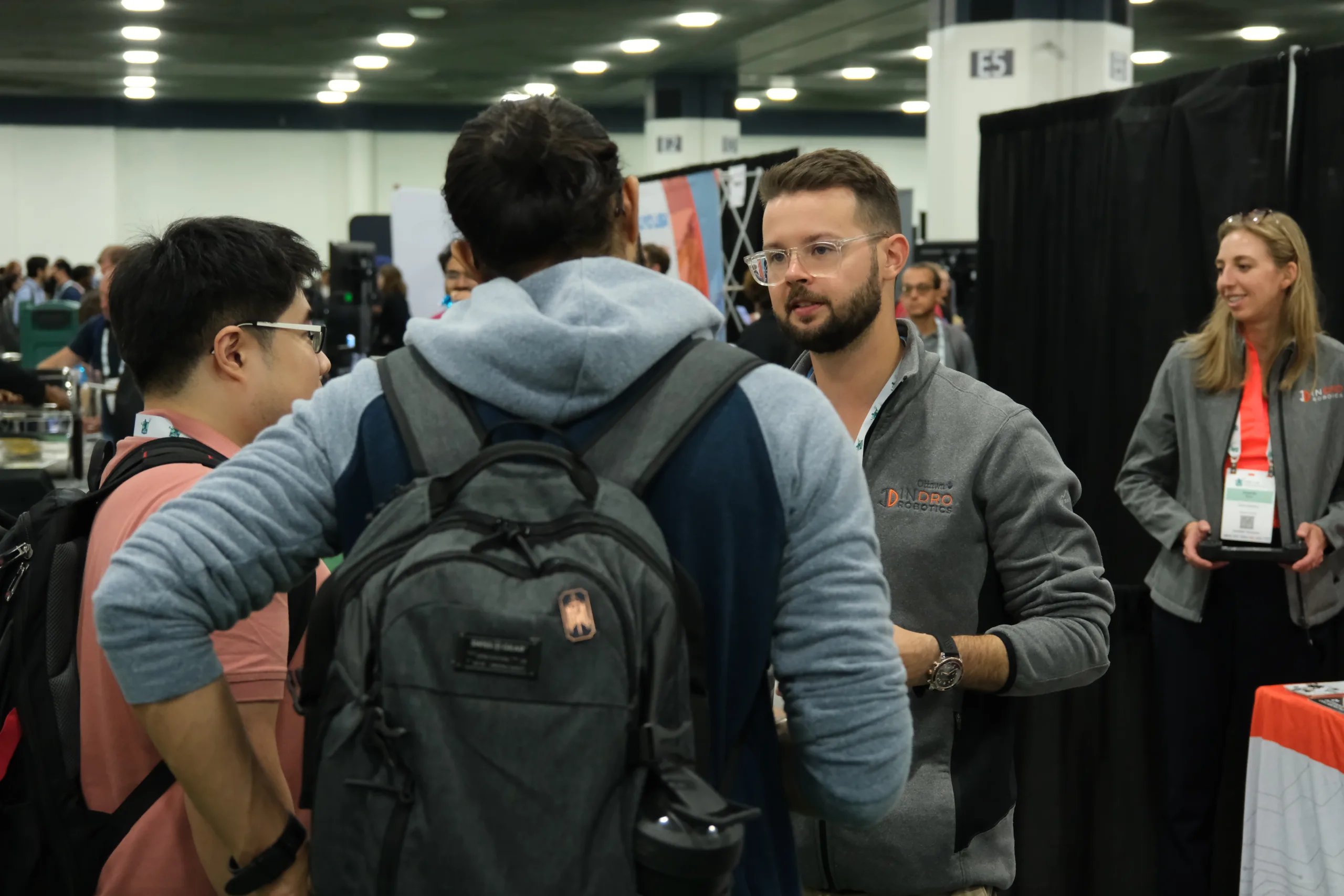
FULFILLMENT AND SUPPORT
Even with the PO signed, the job isn’t done. Prior to starting the build, there’s generally a review call with the client along with engineering staff on the call. We want to ensure we have everything right, and understand every single facet of what the client is expecting.
“It’s a way of ensuring that what we end up delivering ultimately meets every expectation – because the worst thing you can do is send something out the door that doesn’t meet expectations. So we do that, and then we execute,” he says.
With the build complete, the product is shipped. Then there’s another call once it arrives. That ‘kickoff’ call points the client to the vast array of resources and continuously updated documentation InDro provides, as well as answering any initial questions the client might have. The whole concept here is to flatten the learning curve and ensure the client can get up and running with their robot or drone as quickly as possible. That support continues with any issues or questions that might arise after the client becomes familiar with their robot or drone or other device. At InDro, we are just as concerned with ensuring the client is satisfied and able to fully exploit their new product as we were with the original sale.
“We really value the client’s experience and the client’s feedback. In some ways, we create a feedback loop. And that feedback loop is what has enabled us to improve and evolve our products and our documentation at such a fast rate.”
KNOWLEDGE BASE
Luke Corbeth is frequently our lead person at robotics conferences and academic gatherings. He’s the guy PhD engineers will often engage with on InDro products and solutions. And the funny thing here? Luke’s comprehensive understanding of the technologies involved frequently lead people to assume he’s an engineer. In fact, that happened just this week at a University of Toronto event.
“That was like the penultimate compliment,” he says. “Despite having no formal education in engineering, I understand every part of our solution in enough detail that I can knowledgeably discuss hardware and solutions with some of the best professors in the world. Granted, I can’t build an autonomy algorithm. But I know what the robot needs to enable that.”
Of course, Luke would not have been able to reach that knowledge level without working closely with InDro’s talented engineering team at Area X.O. Whenever he’s had a question – they’ve had the answer. Many on our team have served as mentors for him.
Now, it’s one thing for us to say all this. But the real credibility comes with feedback from our clients. Luke received this note after the delivery of a custom robot build for, truly, one of the biggest companies in the world:
“Hey Luke – The robot is fantastic; the craftsmanship is superb; the power on the base is enabling; the intricate way in which the computer fits in the base housing is incredible; the compute box + mast feels “just right” (there’s no template for social robot design, but I feel like we got very close); all these things make me really confident that, with the right algorithms (my responsibility) we can safely and efficiently navigate through crowds. It’s a really special robot that I can’t wait to put in the field. Your team deserves a raise!”
(We’ll have to ask our CEO about that last bit.)
Below, our recent swarm robotics build for a US client

INDRO’S TAKE
InDro would not be thriving without satisfying our clients (many of whom are repeat customers, or are referred to us by existing ones). It is part of our very ethos to fully understand the problems they are trying to solve before we ever start discussing a solution. And it’s only then, through a very collaborative process with the client, that we can deliver a product that not only meets – but frequently exceeds – their expectations.
“Luke is a crucial and always enthusiastic part of the InDro Robotics team,” says Founder and CEO Philip Reece. “His understanding of the technology is phenomenal, and his drive to truly help clients achieve the future they envision seems to be hard-wired into him. Yes, meticulous builds are a key part of client satisfaction and InDro’s reputation. Luke plays an absolutely key role in ensuring that what we ultimately build and deliver is a match with their expectations.”
If you’re considering a robotics solution, contact Luke Corbeth here. He’ll be happy to arrange a test drive.

